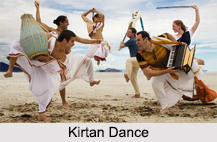 Folk Dance in East India jumps profound into the common life, the folk norms and customs of the particular regions. They are the cultural mouth piece of the rhythmic vibrations of the common mass of the regions. They reflect and furtively project the creative platform conforming to the creative extravaganza of the socio economic life and its panoramic colours. Indian culture is diverse and so is its cultural plot.
Folk Dance in East India jumps profound into the common life, the folk norms and customs of the particular regions. They are the cultural mouth piece of the rhythmic vibrations of the common mass of the regions. They reflect and furtively project the creative platform conforming to the creative extravaganza of the socio economic life and its panoramic colours. Indian culture is diverse and so is its cultural plot.
East India is a region of India consisting of the Indian states of Bihar, Jharkhand, West Bengal, Odisha and also the union territory Andaman and Nicobar Islands.
Different Folk Dances in East India
Following are the different Folk Dances in East India:
Paika Dance: Paika Dance is a famous dance form of Odisha which is practiced by the "paikas" of Oriya army. "Paika" dance of Odisha has a martial art character and is performed with shields and swords. This dance exhibits the skills & the ability of the dancers to handle these weapons. Hence, the name of the dance is "Paika" (battle) dance. The dance reaches its climax with the fast beats produced by `Mandal`. The main target of this dance is to develop the physical excitement and the inner courage.
Brita Dance: Brita dance is one of the most popular folk dances of Bengal. Generally the barren women of the region carry out the Brita dance to pray to the blessings of the Gods so that their wishes are fulfilled. Usually this dance is performed after a person recovers from an infectious disease like small pox.
Dalkhai Dance: Dalkhai Dance is presented in the time of festivals. In the "Dalkhai" dance the men typically play with the musical instruments. `Dalkhai` dance is a popular folk dance among the women folks of the tribal people of Sambalpur, Odisha.
Chhau Dance: "Chhau" is a well-liked folk dance of Bihar. The "Chhau" dance is presented by males. "Chhau" dance is full of energy and strength.
Goti Pua Dance: Goti Pua is yet another popular folk dance of Odisha. Goti Pua act is capably supported by a set of three musicians, who play the "pakhawaj", cymbals and harmonium. The boys do the singing themselves, though at times the group has an extra singer.
Santhal Dance: The dance is performed throughout the harvest festivals and some of the steps and movements of the dance resemble the actions of harvesting. The men beat dhols, or carry mock dhols, in the dance, to say the good harvest.
Kirtan Dance: The `Kirtan` dance is one of the most commonly performed folk-dances of Bengal. This dance is related to the worship of Lord Vishnu and has great antiquity attached to it. This dance was given its proper form by the great religious revivalist, Chaitanya Deva. The most outstanding feature of the "kirtan" dance is that it can be performed by members of the whole village without any distinction on the basis of caste, class or religion. Instruments are used to go with the dance performance. Khol and drum are generally used in the dance. The dance is quite simple with the devotees forming a ring and moving round in a circular pattern raising and lowering their hands with the beating of the drum.




